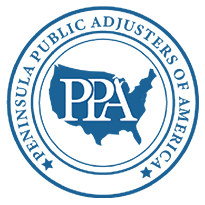The role of a public adjuster is to objectively and accurately assess the covered losses of an insurance claim. You’re welcome to (and should) meet with them in person, so you can explain the incident and resulting losses. However, the adjuster will need to see supporting documentation.
Here’s a list of what documents you should have ready for your public adjuster when you meet them.
1. Official Police/Fire Report (if applicable)
If you filed a report with the police department or fire department, the report is considered a legal statement of what transpired. The report can help establish what happened, and it sometimes serves as supporting evidence if a question arises during your claim. Your insurance company will need copies of all official reports associated with your claim.
By the time a public adjuster arrives, your insurance company will probably have already obtained copies of any reports that were filed. Make sure to have an extra copy on hand to give the adjuster, however, in case they haven’t yet seen the official report themselves.
2. Any Before/After Photographs
Photographs are some of the most reliable and comprehensive evidence that public adjusters can review. Pictures are generally reliable and objective, and they fill in details that might be overlooked when verbally relaying events.
Photographs that show the affected area before and/or after the covered incident can be especially helpful to adjusters. They provide a visual of how the affected area was changed (usually damaged) by the incident.
Don’t be afraid to give your public adjuster a photo dump. They can quickly sort through folders of photographs, and determine which ones are relevant to the claim.
Alternatively, a post-incident video can serve much the same function as photographs.
3. Any Available Receipts
Any receipts that are related to the affected area can also be helpful to a public adjuster, as receipts show precisely how much different things cost.
Depending on your claim, an adjuster might be interested in a couple of different types of receipts. Receipts for belongings that were lost can show the value of those items. Receipts for expenses that were incurred after an incident may also be needed if your insurance policy covers incurred expenses.
4. List of Losses
Compile your own list of everything that was lost, and make a copy of the list for your public adjuster. Detailing your losses in an itemized way will help the adjuster survey the full extent of your claim, and the list can serve as a reference point when discussing the incident. If you’re not sure how to gather the information, just give us a call and we will help you throughout the process.
Prepare to Meet Your Public Adjuster
If you’re meeting with a public adjuster about an insurance claim, you undoubtedly have much to attend to. Take a few moments to gather these documents, and you’ll be well prepared for this part of the claims process.
If you can’t seem to be able to collect any documentation, you’re not 100% sure of what documents to bring, or if you need to speak with a public adjuster, please don’t hesitate to contact us at Peninsula Public Adjusters, and we will gladly help you gather the information needed.


